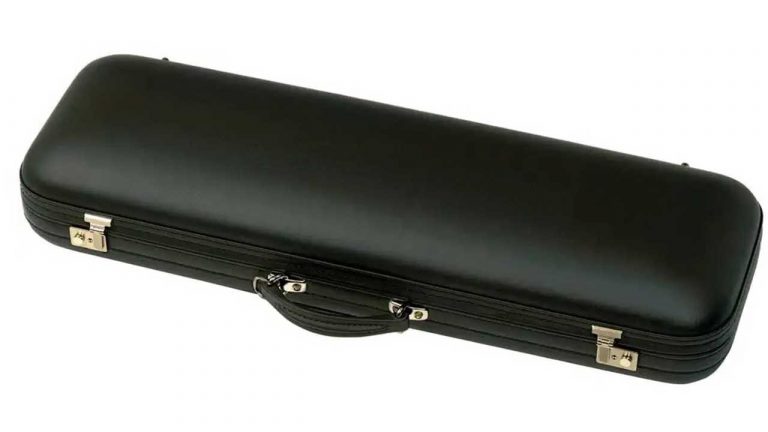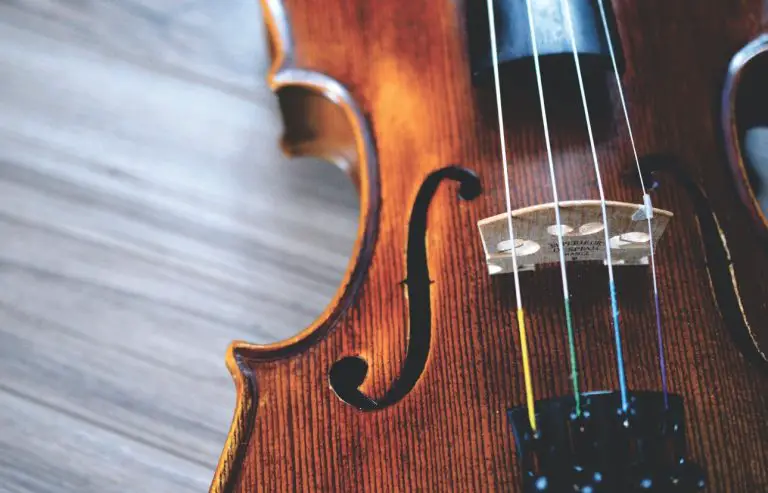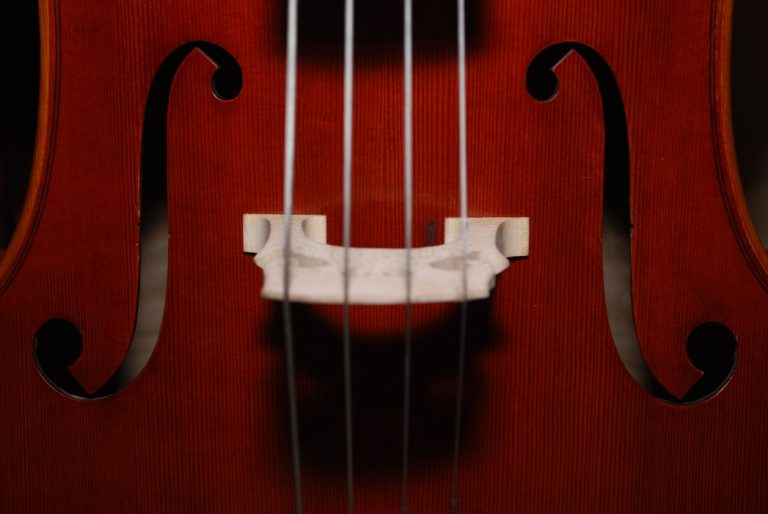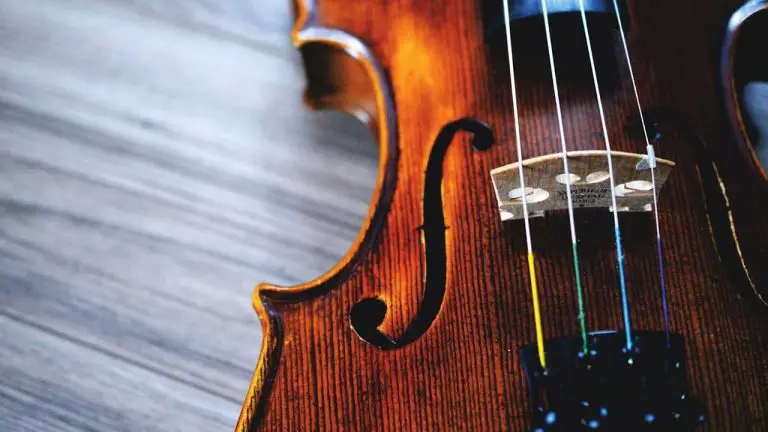What Is The Difference Between A Fiddle And A Violin? – Learn All About The Fiddle
Folkstrings.com is reader-supported. When you buy through links on our site, we may earn a small commission.
While the fiddle and violin are often used interchangeably, the style of music being played often determines the construction.
Fiddles differ from classical violins in that they sometimes have a flatter bridge arch, allowing for boisterous fiddle playing styles, such as the bariolage.
When someone plays the fiddle, they are said to be fiddling. A person who plays this instrument is called a fiddler.
Table of Contents
- Where Did the Fiddle Originate?
- Is the Fiddle the Same as the Violin? What’s the Difference?
- Is It Hard to Learn the Fiddle?
- How to Choose a Fiddle
- What Is the Difference Between the Scottish and Irish Fiddle?
Where Did the Fiddle Originate?

The first known fiddle was derived from the Byzantine lira, and appeared in England during the Medieval era, around the 10th century.
The first historical mention of the lira was by a geographer by the name of Ibn Khordadbeh, in the ninth century. As time went on, in the 11th and 12th centuries,
Europeans often referred to the lira and fiddle interchangeably.
The name fiddle is derived from the Latin word fidula. This word eventually developed into fithela and then fiddle, as we know it today.
The fiddle did not make its way to North America until the 17th century. It became a popular instrument, in part, because of its compact size and ruggedness.

Is the Fiddle the Same as the Violin? What’s the Difference?
Many people wonder what is the difference between a fiddle and a violin and many people are surprised to learn the fiddle and the violin are the same instrument.
Both instruments have four strings and they are played with a bow, but can also be plucked with the fingers or a pick.
Many people wonder why there is a name difference if they are the same instrument.
The primary reason for the different names is the playing style. This instrument is referred to as a violin when it is being used to play classical music, orchestras, chamber music, and symphonies.
On the other hand, it is called a fiddle when it is used to play music genres such as folk, country, bluegrass, and Cajun.
The fiddle is often considered a more laid-back and informal version of the violin.
Although the body is the same on the fiddle and violin, some differences set the two instruments apart.
It is mainly the setup of the two instruments that make them contrasting.
Consider the following minor differences in set up between a violin and fiddle.
· Classical violins typically have gut or synthetic core strings. Fiddles have steel core strings. The strings of a violin lead to more melodic music, while the strings of a fiddle are sharper.
· Some fiddles are made with a flatter bridge that makes playing more than one note at a time much easier.
· Some fiddles are five-string instruments with the fifth string being a lower fifth C-string.
Is It Hard to Learn the Fiddle?
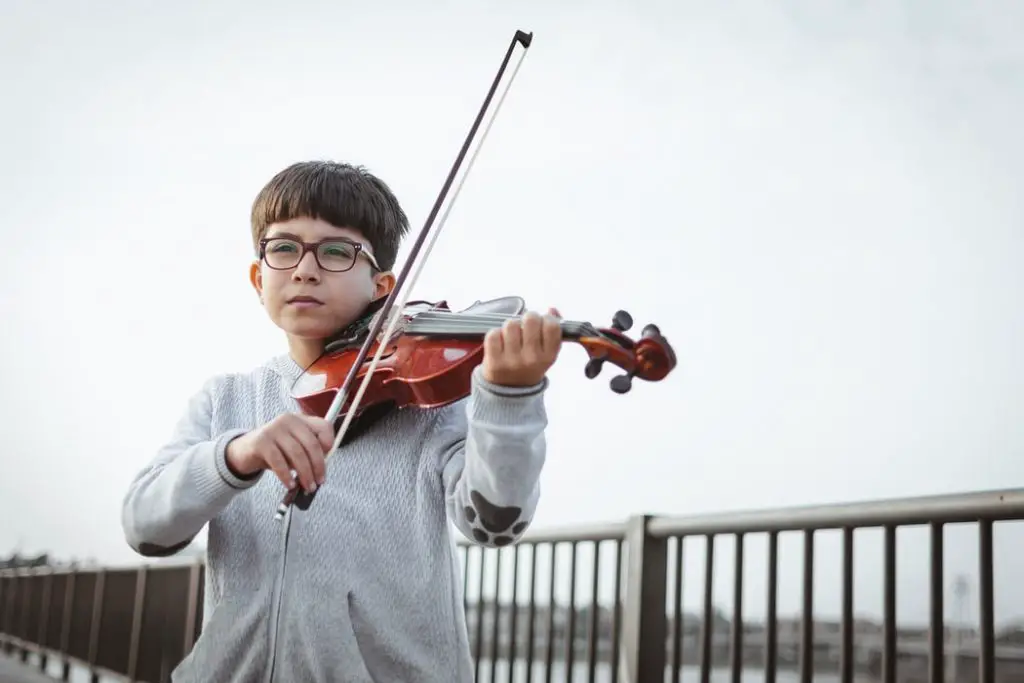
While watching fiddlers play their tunes, it might seem fairly straightforward to learn, but this is not exactly the case.
Playing the fiddle is not easy, but it is simpler than playing the classical violin.
The fiddle is not a forgiving instrument, and if you play badly, it really shows. That being said, it is not as difficult as some believe, as long as you put your mind to it and stay focused.
You can expect the first year to be tough, no matter what kind of musical experience you bring to the table.
Often, new fiddlers will give up within the first year, thinking they will never master the instrument.
If you keep trying and reaching for your goals, they will become a reality.
The following are some reasons new fiddlers find it difficult to learn to play the fiddle.

Chords
Fretted instruments are more forgiving because they have steel fret lines that help guide the fingers into the correct positions.
The fiddle is not fretted. There are no lines or impressions to help fiddlers know where to place their fingers, and this can be problematic until a fiddler becomes comfortable.
When new fiddlers are starting, it is often helpful to place stickers on the points where the fingers need to be placed.
Eventually, new fiddlers learn how to place their fingers naturally. They will instantly know if their finger placement is wrong because of the sharpness or flatness of the sound.
Bow
Another reason so many fiddlers want to give up, in the beginning, is bowing.
Trying to keep the bow straight while also attempting to find proper finger placement can be especially stressful.
The following are some common bow problems for new fiddlers.
· Slouching or leaning forward can cause the bow to be in the wrong position.
· Pressing too hard or too lightly on the fingerboard will create an incorrect sound.
· Incorrect placement of the first finger causes major intonation problems.
· Not using 100% of the bow is a common issue among new fiddlers.
· Many new fiddlers lack flow when bowing their instrument.
When you first learn to fiddle, it is important to take it a day at a time.
Expect that practice will be arduous at first, but you will see slow improvements.
It takes one to two years to become good enough to play in front of others with confidence.
How to Choose a Fiddle
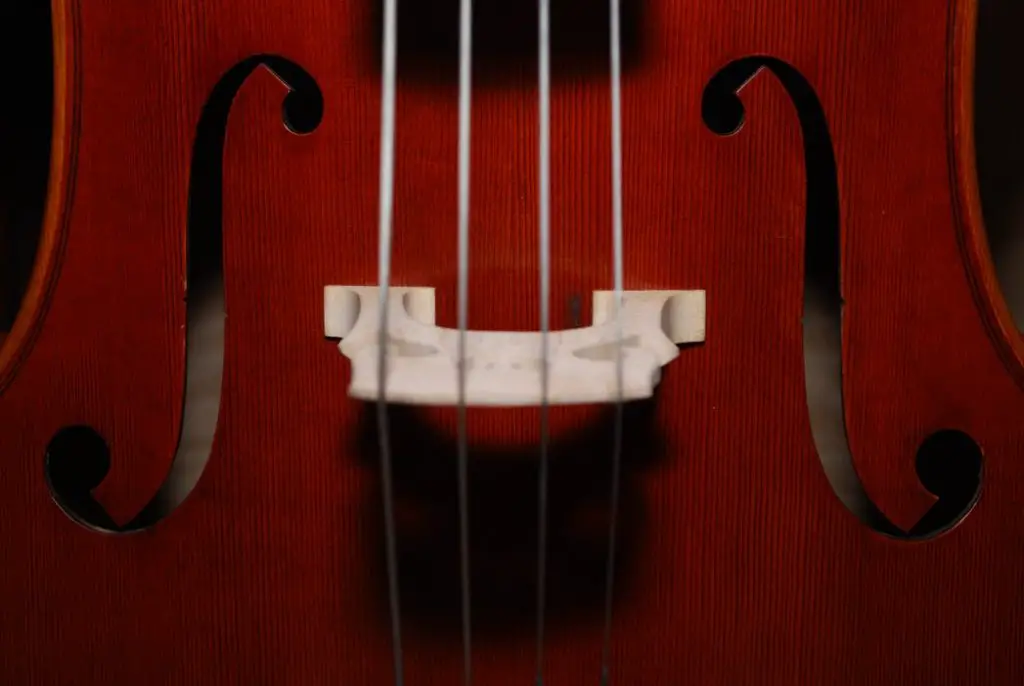
One of the most common questions new fiddlers have is how to choose a fiddle.
Purchasing a fiddle can seem to be a daunting task for new fiddlers. There are a few considerations needed when purchasing a fiddle.
Size
Size is an important consideration. Most adult fiddlers are going to need a full-sized fiddle which is 4/4.
Some adults may need a smaller size if they have shorter arms or a smaller body frame.
To measure for the proper size, measure from the neck to the palm, with the arm fully extended. Full adult size measures 23 5/8 inches.
Sound
Sound is a very important consideration when purchasing a new fiddle. There are many qualities of sound for fiddles, but the top three include the following.
Projection. Projection is important because it ensures the fiddle will be loud enough. Some people purchase a quieter fiddle because they do not want to disturb their neighbors. If you plan on playing as an accompaniment, you will need a high level of projection.
Tone. The fiddle needs to have a clean tone that is pure and pleasant. Fiddlers should never purchase a fiddle without playing it first. There are good and bad fiddles in all brands and price ranges. Try them for tone first.
Depth. How rich the notes sound is integral for playing a beautiful tune on a fiddle. If the notes fall flat and lack depth, fiddlers will not get that perfect sound they crave.
Quality
A fiddler is only as good as the fiddle they play. The quality of the instrument is of extreme importance.
There are both handmade and manufactured fiddles.
Of course, handmade instruments are almost always superior, though that does not mean you will not find good fiddles from manufacturers all over the world.
Research the options, whether buying a second-hand fiddle or a new one.
By knowing what to look for, you can purchase a beautiful fiddle that will create a rich depth of sound fiddlers long for when playing their instruments.
What Is the Difference Between the Scottish and Irish Fiddle?
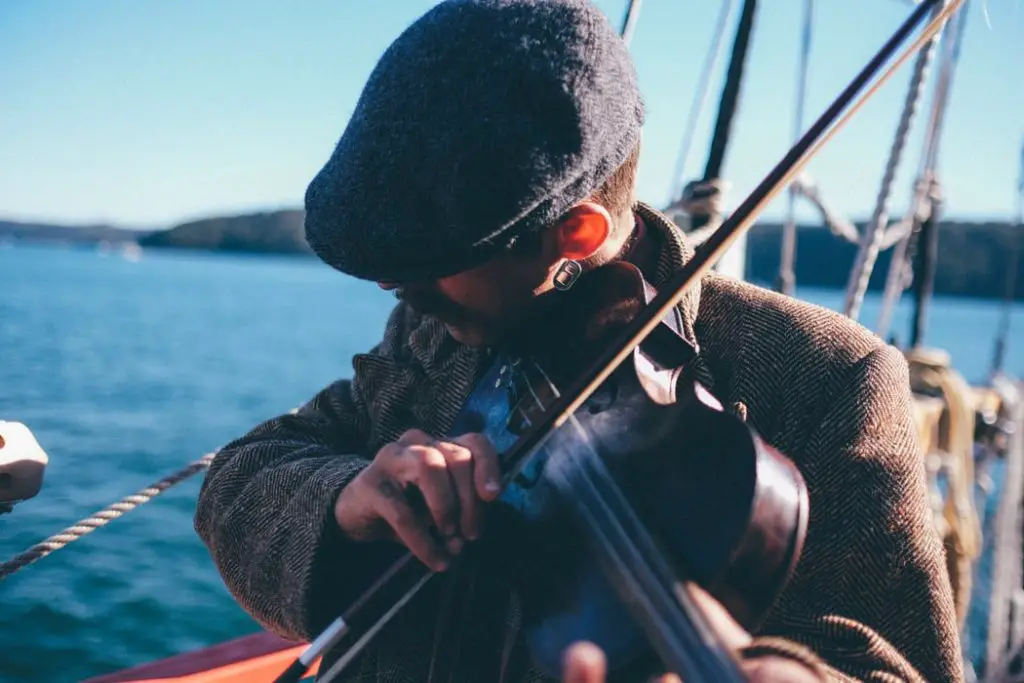
Both the Scottish and Irish share a history that is deeply rooted in a love of fiddle music.
Untrained ears can often find it difficult to determine the differences between the two fiddle styles.
Some argue over the differences between the two types of fiddles.
Generally speaking, Scottish fiddling is much more bow driven. It has a manlier, throatier sound than Irish fiddle music.
Scottish music is choppier and often faster than Irish fiddle music.
Irish fiddle music flows evenly because of the ornamentation played by the left hand of the fiddler.
The Irish approach to fiddle music is more of a rolling and flowing rhythm rather than a choppy and fast variation, like the Scottish version.
As stated above, the fiddle is an extremely important instrument that is beloved by both countries.
Both countries play a 6/8 jig, but the Scottish add strathspeys, which is a 4/4 relative of the reel.
Conclusion
The fiddle is an instrument that has stood the test of time.
From its humble beginnings, it has risen in popularity and remains a respected instrument in folk, bluegrass, country, Irish, Scottish, and many other music styles.
Learning to play the fiddle can seem a daunting task for beginner fiddlers, but it is not an impossible instrument to master.
With the right instrument, determination, and consistent practice, you can learn to play the fiddle fluently.
Author Profile
-
Daniel Johnstone is an English writer with a love for stringed instruments from around the world.
He shares his love for these instruments through his writing for folkstrings.com, a website dedicated to all things related to folk string music.
Daniel's passion for music started at a young age, and he has since become an accomplished musician, playing guitar, cavaco, and recently, the harp.
His dedication to learning and sharing his knowledge of stringed instruments is evident in his insightful and engaging blog posts. Whether you're a seasoned musician or a beginner, Daniel's writing is sure to inspire and entertain you.
When he's not playing music or writing, you can find Daniel exploring new instruments and seeking out new sounds to share with his readers.
Latest entries
 AutoharpApril 4, 2024What Is the Autoharp Made Of: Exploring Its Materials and Craftsmanship
AutoharpApril 4, 2024What Is the Autoharp Made Of: Exploring Its Materials and Craftsmanship AutoharpApril 4, 2024Is Autoharp Easy to Play? Unveiling the Truth for Beginners
AutoharpApril 4, 2024Is Autoharp Easy to Play? Unveiling the Truth for Beginners AutoharpApril 4, 2024What Is an Autoharp Worth? Your Guide to Pricing and Value
AutoharpApril 4, 2024What Is an Autoharp Worth? Your Guide to Pricing and Value AutoharpApril 4, 2024Are Autoharp and Zither the Same Thing? Unraveling String Instrument Myths
AutoharpApril 4, 2024Are Autoharp and Zither the Same Thing? Unraveling String Instrument Myths
Affiliates:
This post may contain affiliate links that at no additional cost to you, the site may earn a small commission. We only recommend products we would use ourselves and all opinions expressed on this site are our own.
Accuracy Advice:
While we strive to provide up-to-date and accurate information, the content in this article may not reflect the most current research or medical guidelines. We encourage readers to do further research and consult with professionals for more personalized advice.
Our Recommendations:
The products and services mentioned in any of our articles are recommended based on our independent research and personal experience. We are not sponsored by any company. We aim to suggest products and services we believe are of high quality and could be beneficial to our readers.


